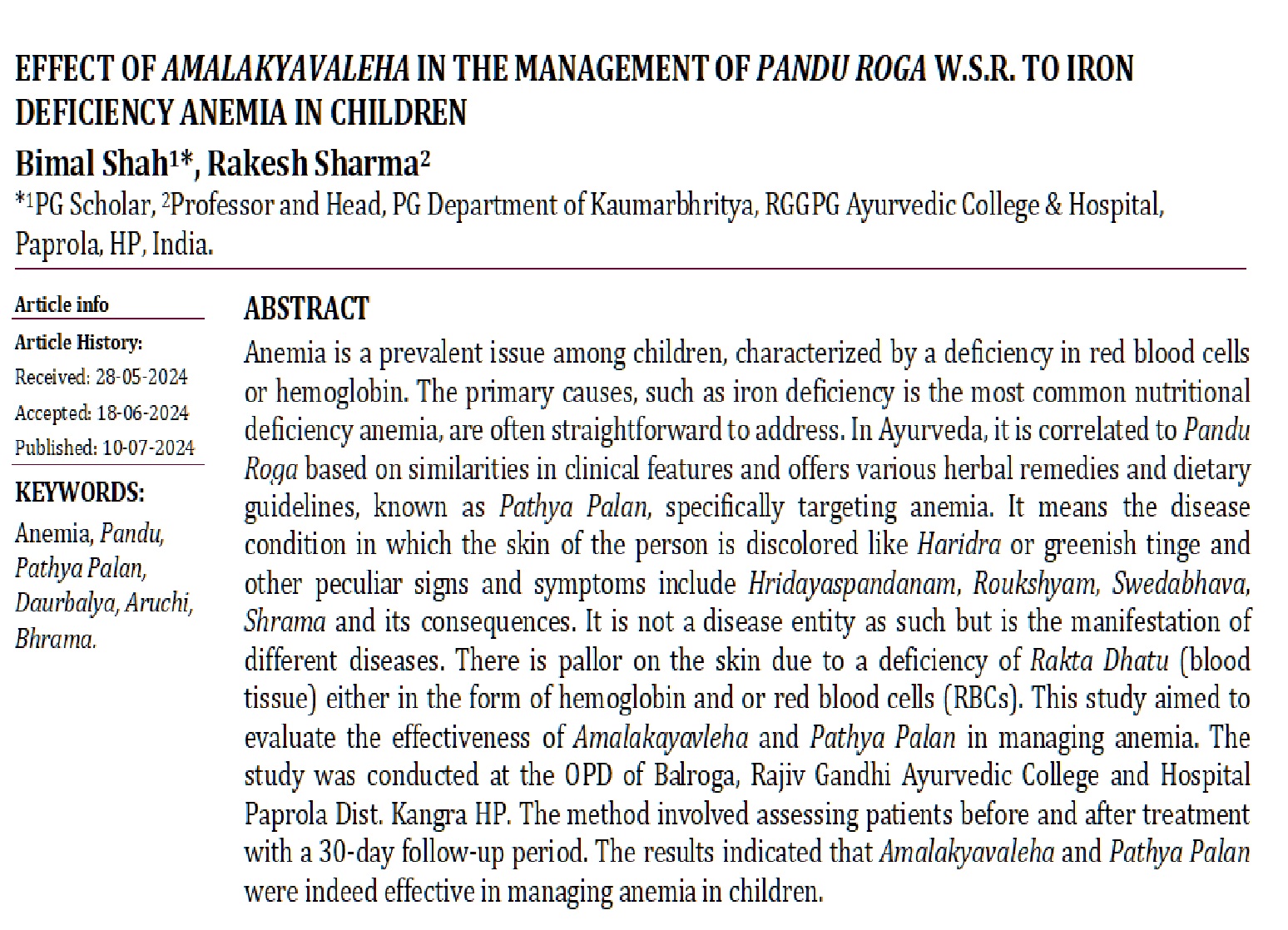Effect of Amalakyavaleha in the Management of Pandu Roga w.s.r. to Iron Deficiency Anemia in Children
DOI:
https://doi.org/10.47070/ayushdhara.v11i3.1596Keywords:
Anemia, Pandu, Pathya Palan, Daurbalya, Aruchi, BhramaAbstract
Anemia is a prevalent issue among children, characterized by a deficiency in red blood cells or hemoglobin. The primary causes, such as iron deficiency is the most common nutritional deficiency anemia, are often straightforward to address. In Ayurveda, it is correlated to Pandu Roga based on similarities in clinical features and offers various herbal remedies and dietary guidelines, known as Pathya Palan, specifically targeting anemia. It means the disease condition in which the skin of the person is discolored like Haridra or greenish tinge and other peculiar signs and symptoms include Hridayaspandanam, Roukshyam, Swedabhava, Shrama and its consequences. It is not a disease entity as such but is the manifestation of different diseases. There is pallor on the skin due to a deficiency of Rakta Dhatu (blood tissue) either in the form of hemoglobin and or red blood cells (RBCs). This study aimed to evaluate the effectiveness of Amalakayavleha and Pathya Palan in managing anemia. The study was conducted at the OPD of Balroga, Rajiv Gandhi Ayurvedic College and Hospital Paprola Dist. Kangra HP. The method involved assessing patients before and after treatment with a 30-day follow-up period. The results indicated that Amalakyavaleha and Pathya Palan were indeed effective in managing anemia in children.
Downloads

Downloads
Published
Issue
Section
License
Copyright (c) 2024 AYUSHDHARA

This work is licensed under a Creative Commons Attribution-NonCommercial-ShareAlike 4.0 International License.


